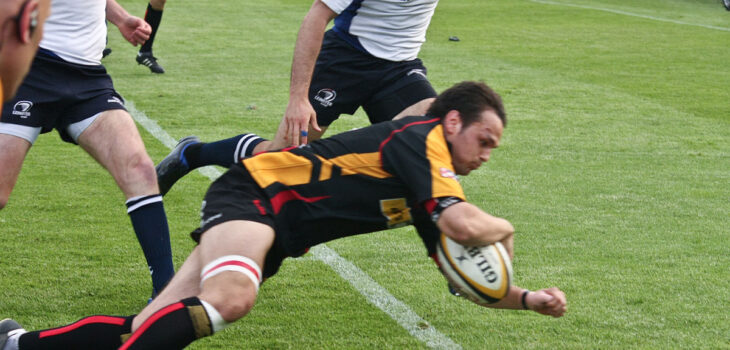 Business
Business
Rugby à XV: A Dynamic and Thrilling Team Sport
- by ariziabatool
Rugby à XV, also known as Rugby Union, is one of the most exciting and physically demanding team sports in the world. Played on a large oval field, this game blends elements of strategy, physicality, and teamwork to create a thrilling spectacle. Originating from England in the 19th century, Rugby Union has grown into a global sport, with passionate followings in countries such as New Zealand, South Africa, England, Australia, and France. Whether it’s a local club match or the prestigious Rugby World Cup, Rugby Union is a sport that captures the hearts and imaginations of millions.
The Origins of Rugby à XV
The roots of Rugby Union can be traced back to the early 19th century at Rugby School in Warwickshire, England, where the sport was first played in 1823. Legend has it that during a school football match, a player named William Webb Ellis picked up the ball and ran with it, creating the foundation for the game of rugby.
Over the following decades, the rules of rugby evolved, and in 1871, the Rugby Football Union (RFU) was established to standardize the game. Rugby Union was distinct from other versions of football, with its emphasis on running, passing, and physical confrontations. The sport spread rapidly across the globe, and in 1987, the first Rugby World Cup was held, cementing Rugby Union’s status as an international sport.
The Basic Rules of Rugby à XV
Rugby à XV is played between two teams of 15 players each, with the objective of scoring more points than the opposing team within an 80-minute game. The match is divided into two 40-minute halves, with a brief halftime break.
The core elements of the game are:
Scoring: There are four main ways to score points:
Try (5 points): A try is scored when a player grounds the ball in the opponent’s in-goal area (behind the try line).
Conversion (2 points): After scoring a try, the team has the opportunity to kick the ball between the uprights for an additional two points.
Penalty Kick (3 points): A team can attempt a penalty kick if the opposing team commits an infringement.
Drop Goal (3 points): A player can kick the ball over the crossbar during open play to score three points.
The Scrum: One of Rugby Union’s most iconic features is the scrum. This occurs after certain types of infringements (like a knock-on or forward pass), where the eight forwards from each team bind together in a tight formation and contest for possession of the ball.
The Lineout: When the ball is thrown into touch (out of bounds), the game restarts with a lineout, where players from each team jump to contest the ball thrown in from the sideline.
The Ruck and Maul: These are two forms of play that occur after a tackle. A ruck occurs when the ball is on the ground, and players from both teams compete to win the ball by pushing over the ball and opposing players. A maul forms when the player in possession is held up by one or more opponents, and teammates join in to try and drive the ball forward.
The Positions and Roles of Players
Rugby à XV is a highly structured game, with each player having specific roles depending on their position. The team is divided into forwards and backs:
Forwards (1-8): The forwards are the physical backbone of the team. They are responsible for winning the ball in scrums, lineouts, rucks, and mauls. The forwards are typically larger and stronger, focusing on set-piece play and providing support in attacking phases. Key positions include:
Props (1, 3): Provide stability in the scrum and are heavily involved in rucks and mauls.
Locks (4, 5): Typically the tallest players, they jump in lineouts and provide power in scrums.
Back Row (6, 7, 8): Includes the flankers and number eight, who are dynamic players focused on tackling, carrying the ball, and contesting rucks.
Backs (9-15): The backs are generally faster and more agile, with a focus on exploiting space and creating scoring opportunities. Their primary task is to handle the ball in open play, passing and running to break through the opposition’s defense. Key positions include:
Scrum-half (9): The link between the forwards and backs, responsible for passing the ball out of the scrum or ruck quickly.
Fly-half (10): Often the playmaker, directing the attack and making key decisions.
Centres (12, 13): Strong runners who break through the opposition’s defensive line.
Wingers (11, 14): Speedsters who finish attacking moves and score tries.
Full-back (15): Positioned at the back, the full-back is key in defense, collecting kicks and counter-attacking.
Major Competitions in Rugby Union
Rugby Union has a rich history of major competitions, with national and international tournaments that attract millions of spectators. Some of the most significant events include:
Rugby World Cup: The premier international competition, held every four years, brings together the best teams from across the globe. The competition has seen nations like New Zealand, South Africa, and England emerge victorious, showcasing the sport’s global appeal.
Six Nations Championship: A prestigious annual competition involving six teams: England, France, Ireland, Italy, Scotland, and Wales. It is one of the oldest rugby tournaments, with a rich history of fierce rivalries and thrilling matches.
The Rugby Championship: A Southern Hemisphere competition featuring Argentina, Australia, New Zealand, and South Africa. This tournament is known for its high-octane play and passionate fanbases.
Super Rugby: An international club competition that includes teams from Australia, New Zealand, South Africa, Argentina, and Japan. Super Rugby brings together the best club teams from these regions, offering thrilling matches and top-tier talent.
Domestic Leagues: Most countries have their own domestic rugby leagues, such as the English Premiership, the French Top 14, and the Pro14, which feature professional club teams competing at the highest level.
The Spirit of Rugby
Rugby à XV is renowned not only for its physicality and skill but also for the respect and camaraderie that define the sport. The rugby culture emphasizes values such as teamwork, sportsmanship, and respect for the referees and opponents. The tradition of shaking hands after a match and applauding the efforts of both teams is a core aspect of rugby’s ethos.
Conclusion
Rugby à XV is a sport of immense complexity and excitement, where power, strategy, and finesse all come into play. From the intensity of the scrum to the speed of the backs, Rugby Union is a thrilling spectacle that showcases the best of athleticism and team dynamics. Whether on a professional level or as a local game, rugby brings together players, fans, and communities in the spirit of competition and respect. Its global reach and rich history make Rugby Union not just a sport, but a way of life for millions of fans around the world.









